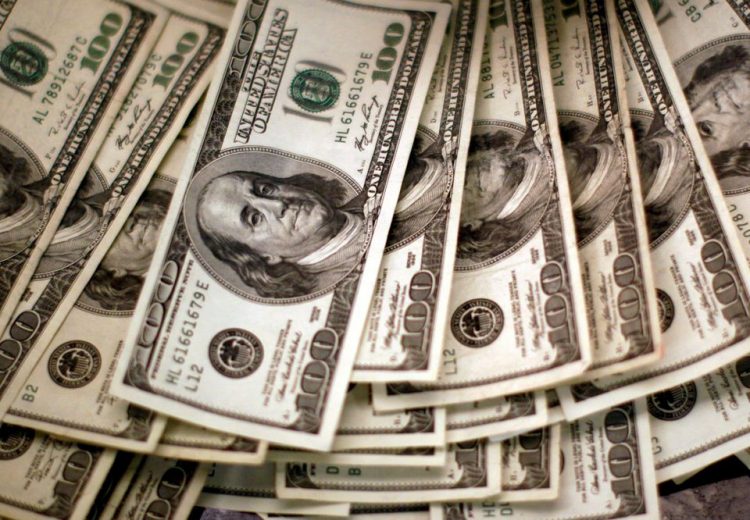Publisher: Maaal International Media Company
License: 465734
Dollar drops versus yen, Swiss franc as Trump’s tax bill and tariffs weigh
The U.S. dollar weakened on Tuesday, falling the most against the Japanese yen and the Swiss franc, as President Donald Trump’s massive tax-cut and spending bill stoked fiscal worries and uncertainty around trade deals weighed on sentiment, Reuters reported.
Investors have also started wagering on a quicker pace of monetary policy easing by the Federal Reserve this year ahead of a slew of U.S. economic data this week, headlined by Thursday’s nonfarm payrolls report.
That spurred dollar-selling, which slipped 0.33% to a new 10-year low and fetched 0.790 Swiss francs, while the greenback dropped 0.64% to 143.08 Japanese yen. The yen capped the first half of the year with a 9% gain – its strongest performance since 2016.
اقرأ المزيد
The euro was perched at a near four-year high of $1.1781. The single currency surged 13.8% in the January-June period, its strongest-ever first half performance, LSEG data showed.
Sterling inched up 0.2% to $1.3757, not far from the three-and-a-half-year high it touched last week, while the dollar index, which measures the U.S. currency against six others, slipped to 96.698, its lowest since February 2022.
“There are many reasons not to like the USD. Some are structural, like the erratic trade policies and fiscal risks,” said Moh Siong Sim, a currency strategist at Bank of Singapore.
“They have earlier caused the USD to weaken despite its relative yield advantage. But the risk of a more dovish Federal Reserve eroding USD’s yield advantage is the latest source of USD weakness.”
Goldman Sachs now expects Fed to deliver three quarter-point interest rate cuts this year compared with its earlier forecast of a single reduction in December, citing muted tariff effects and labour market weakness.
Investors are also grappling with uncertainty over the U.S. Senate’s efforts to pass Trump’s budget bill, which faces internal party divisions over its projected $3.3 trillion addition to the national debt. The fiscal concerns have dampened sentiment and prompted some investors to diversify.
The world’s reserve currency is down more than 10% this year, its biggest first-half dive since the era of free-floating currencies began in the early 1970s.
TRUMP VERSUS FED
Meanwhile, Trump has continued hammering the Fed to ease monetary policy, sending Fed Chair Jerome Powell a list of central bank interest rates around the world adorned with handwritten commentary saying the U.S. rate should be between Japan’s 0.5% and Denmark’s 1.75%.
Trump’s constant tirade against the Fed and Powell has fuelled investor worries about the central bank’s independence and its credibility. Trump cannot fire Powell over a policy dispute, but last week urged him to resign.
Investor focus will be on comments from Powell, who joins several other central bank chiefs at the European Central Bank forum in Sintra, Portugal, on Tuesday. Traders are now pricing in 67 basis points of easing from the Fed this year.
A survey on manufacturing activity along with a report on job openings is due later in the day in the U.S., ahead of Thursday’s pivotal nonfarm payrolls figures.
Analysts say that any signs of labour market weakness could bolster bets for more interest rate cuts by the Fed and spark a new wave of dollar weakness.
With the July 9 deadline for Trump’s tariffs fast approaching, investors are also keeping an eye on trade deals between the U.S. and its partners although there have not been many agreements so far.









